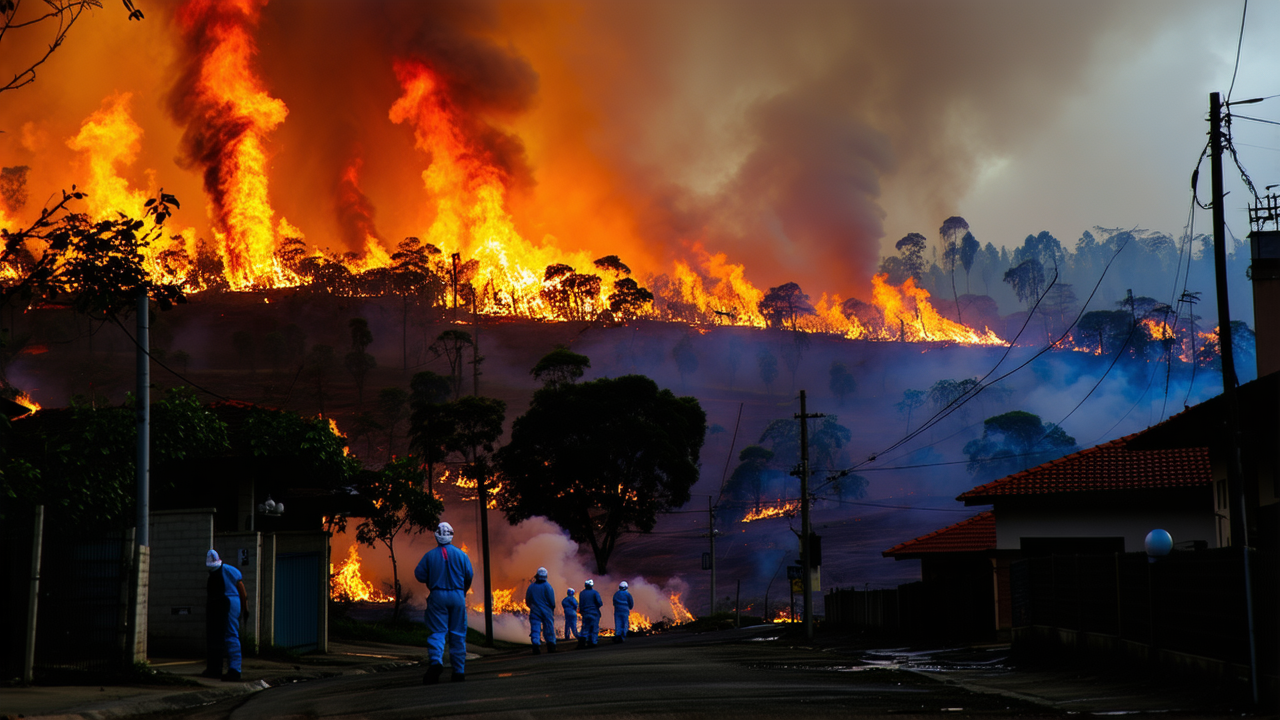New Research Links Hundreds More Deaths to Major Bushfires in Los Angeles and Hawaii
New Research Links Hundreds More Deaths to Major Bushfires in Los Angeles and Hawaii
Recent findings from three studies published in the Journal of the American Medical Association (JAMA) have revealed a startling connection between major bushfires in Los Angeles and Hawaii and an unexpected rise in mortality rates, far beyond the initial official death tolls.
The research highlights the long-term and often overlooked public health impacts of wildfires, including chronic respiratory issues, mental health burdens, and even increased suicide rates among affected populations. These findings are not only reshaping our understanding of disaster response but also prompting a global reevaluation of how we prepare for and mitigate the consequences of extreme weather events.
Los Angeles: The Hidden Toll of Wildfires
In Los Angeles, the studies revealed a significant number of excess deaths linked to wildfire smoke exposure. These deaths were not limited to those directly affected by the fires but also included individuals who were exposed to the smoke over extended periods. Public health experts warn that the long-term effects of such exposure, including respiratory and cardiovascular diseases, are often underestimated and not accounted for in emergency response planning.
One of the studies pointed out that even individuals who did not experience the fires firsthand may have been affected by the prolonged exposure to toxic particulate matter in the air. This raises serious questions about the adequacy of current public health messaging and the need for more robust policies to protect vulnerable populations during such events.
Hawaii: A Devastating Aftermath
The impact of the fires in Hawaii was equally severe, with the studies revealing a dramatic increase in mental health issues, including depression, low self-esteem, and suicidal ideation. Almost half of the surveyed population reported persistent respiratory symptoms, and those living within the fire perimeter showed significantly reduced lung function.
The research also highlighted the disproportionate impact on food security, with nearly a quarter of the surveyed individuals experiencing very low food security, more than double the pre-disaster rate. This adds another layer of complexity to the already overwhelming physical and mental health challenges faced by the affected communities.
The 'Long Tail' of Disasters
Experts like Andrew Gissing from Natural Hazards Research Australia emphasize that the studies are not only important but also predictable. He refers to the phenomenon as the 'long tail of disasters,' where the true impact of extreme weather events extends far beyond the immediate destruction and loss of life.
Gissing notes that in Australia, similar studies following the Black Summer bushfires found hundreds of excess deaths linked to the health impacts of wildfire smoke. This underscores the urgent need for a global shift in disaster management strategies, focusing not only on fire suppression but also on public health preparedness.
The Need for a New Approach
The research has sparked a broader conversation about the limitations of current emergency response systems. Dr. Sonia Angell from the Hopkins Bloomberg School of Public Health argues that the health effects of wildfires are not isolated events but rather part of a larger, ongoing process that can persist for years after the fires have been extinguished.
Angell highlights the need for a more comprehensive approach to disaster management, one that includes long-term mental health support and environmental policies that reduce the risk of future wildfires. She stresses that the health impacts of such events are not limited to those who were directly affected but extend to entire communities and even future generations.
A Global Wake-Up Call
The findings from Los Angeles and Hawaii serve as a wake-up call for governments and public health officials worldwide. They highlight the need for a more integrated approach to disaster management that not only addresses the immediate needs of affected populations but also considers the long-term health and environmental consequences of extreme weather events.
As climate change continues to increase the frequency and intensity of natural disasters, the lessons learned from these studies will be crucial in shaping the future of disaster response and mitigation strategies around the globe.
